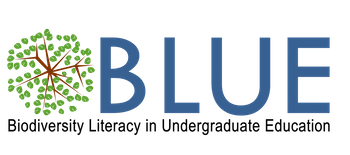Data is the New Science
Author(s): Anna Monfils1, Debra Linton1, Libby Ellwood2, Molly Phillips3
1. Central Michigan University 2. iDigBio 3. iDigBio, Florida Museum of Natural History, University of Florida
3563 total view(s), 1343 download(s)
Data is the New Science Module.docx(DOCX | 3 MB)
GBIF User Guide.docx(DOCX | 3 MB)
IDigBio User Guide.docx(DOCX | 2 MB)
- License terms
Description
There is a changing landscape for those joining the 21stcentury workforce. Rapid advances in data research and technology are transforming how we conduct science. The volume and variety of data being generated, the increased accessibility of data for aggregation, the improved discoverability of data, and the increasingly collaborative and interdisciplinary nature of scientific research are driving the need for new skill sets to address scientific issues of critical national and global importance.
The biodiversity sciences have experienced a rapid mobilization of data that has increased capacity to investigate large-scale issues of critical importance (e.g., climate change, zoonotic disease, resource management, invasive species, and biodiversity loss). In order to investigate these types of questions, the 21stcentury biodiversity scientist must be fluent in integrative fields spanning evolutionary biology, systematics, ecology, geology, genetics, biochemistry, and environmental science and possess the quantitative, computational, and data skills to conduct research using large and complex datasets.
In this module, students will be introduced to some emerging biodiversity data resources. They will be asked to think critically about the strengths and utility of these data resources and then encouraged to think beyond the obvious to how these data could be used to answer big science questions.
Students completing this module will be able to:
- Access data from biodiversity digital data repositories
- Evaluate the research utility of occurrence data derived from different sources.
- Create and interpret a graph
- Use geo-spatial data to inform biological thinking
- Describe how a change in a system can impact multiple parts of a system
- Explain how morphology, behavior, and physiology of a species can impact another species in a co-evolutionary relationship
Cite this work
Researchers should cite this work as follows:
- Monfils, A., Linton, D., Ellwood, L., Phillips, M. (2019). Data is the New Science. Biodiversity Literacy in Undergraduate Education, QUBES Educational Resources. doi:10.25334/Q4RR0R
